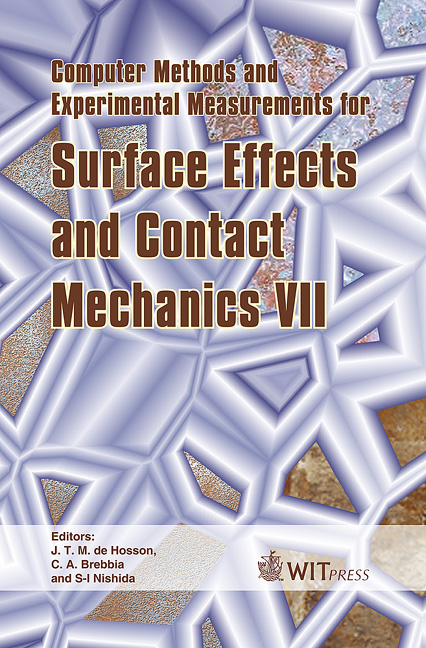The Effect Of Laser Deformation On Fatigue Properties Of Automotive Dual Phase Steel
Price
Free (open access)
Transaction
Volume
49
Pages
10
Published
2005
Size
1,166 kb
Paper DOI
10.2495/SECM050371
Copyright
WIT Press
Author(s)
A. Els-Botes, P. J. McGrath & D. G. Hattingh
Abstract
It became evident from previous research that the fatigue strength of wheel centre discs decreases as much as 83% during the manufacture (first production stage) of the automotive wheel [1, 2]. This information was the driving force in obtaining an alternative forming process in order to maintain the high fatigue strength of the metal. The laser forming/deforming process was chosen because of its ease of automation and reproducibility. It was found that it was possible to deform dual phase steel specimens, employing various laser parameters, to the same radius of curvature as that of the first production stage of wheel centre discs. Microstructural analysis indicated a change of the original microstructure due to the heat generated by the laser beam. The original martensite/ferrite microstructure transformed to various transformation phases of the steel, like bainite and ferrite/carbide aggregate. These microstructural changes are concentrated on the surface over which the laser beam radiated. Grain growth was also observed and is an important consideration as large grains are considered to embrittle a material. Fatigue testing of the laser formed specimens revealed that the process has potential to be used as a production stage, providing that line energy and beam diameter is carefully controlled. The laser formed specimens formed by employing a 1.5kW laser power showed results very similar to those obtained by specimens formed be means of a pure bend process. Although the results obtained indicated that laser forming has the possibility of being employed as a deformation process, the fatigue properties of the laser formed specimens were inferior compared to the original un-deformed material. It was also determined that the hardness profile along the length of the specimens showed a variation that could lead to a metallurgical notch. The hardness was at a maximum with the position corresponding to the centre of the laser beam with the lowest hardness obtained in the region between two consecutive laser heat lines. Keywords: laser deformation, laser forming, laser bending, fatigue, dual phase steel.
Keywords
laser deformation, laser forming, laser bending, fatigue, dual phase steel.





